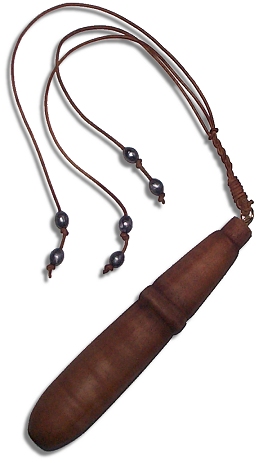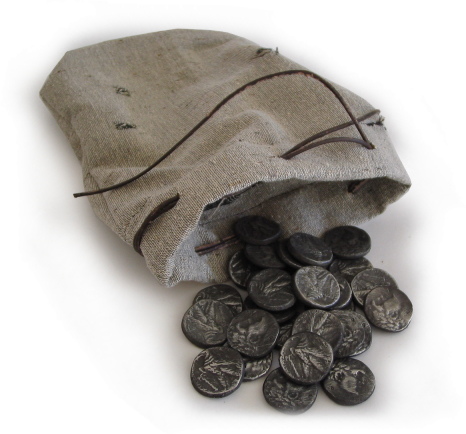You are using an out of date browser. It may not display this or other websites correctly.
You should upgrade or use an alternative browser.
You should upgrade or use an alternative browser.
Easter Props
- Thread starter Sporak
- Start date
<div class='quotetop'>QUOTE(Sporak @ Apr 4 2007, 01:39 PM) [snapback]1455276[/snapback]</div>
I've made these props over the past few years. A few of them have been for churches, others for speakers, and one of each for myself.







Kind regards,
Magnoli
I wonder just how many of us proppers are busy this week on
props for our various church plays?[/b]
I've made these props over the past few years. A few of them have been for churches, others for speakers, and one of each for myself.







Kind regards,
Magnoli
Macrossmaster
Well-Known Member
Love the props guys. Magnoli, I've always wanted one of your crowns of thorns for a display in my future office when I graduate seminary. Don't know if I could afford it on my salary though - and they sure look like they'd be heck on the hands to make em.

<div class='quotetop'>QUOTE(Macrossmaster @ Apr 4 2007, 09:37 PM) [snapback]1455595[/snapback]</div>
I like to call it "meditation". I used to make one every year on Good Friday, but the old thorn bush has been pruned back quite a bit, so I don't think I'll be doing another one this year.
I used to make one every year on Good Friday, but the old thorn bush has been pruned back quite a bit, so I don't think I'll be doing another one this year.
Kind regards,
Indy
I've always wanted one of your crowns of thorns...and they sure look like they'd be heck on the hands to make em.[/b]
I like to call it "meditation".
Kind regards,
Indy
I have a thorny locust tree (quite a few actually)...I can probably make one for you 
We have one displayed on the Bible on the altar in the church.
Hey, that's pretty funny
<div class='quotetop'>QUOTE(BoBoDohn @ Apr 4 2007, 05:23 PM) [snapback]1455393[/snapback]</div>
We have one displayed on the Bible on the altar in the church.
Hey, that's pretty funny
<div class='quotetop'>QUOTE(BoBoDohn @ Apr 4 2007, 05:23 PM) [snapback]1455393[/snapback]</div>

Oh, c'mon... I can't believe I was the first to post this. :lol
[/b]
DarthCalibar
Well-Known Member
<div class='quotetop'>QUOTE(Macrossmaster @ Apr 4 2007, 06:37 PM) [snapback]1455595[/snapback]</div>
Actually making a crown of thorns is quite simple if youve got the right tree growing in your yard, My father is the youth minister at our church and we made one from the spikes growing on a tree that look EXACTLY like that. Best part is it was free. Ill post pics if youd like.
Love the props guys. Magnoli, I've always wanted one of your crowns of thorns for a display in my future office when I graduate seminary. Don't know if I could afford it on my salary though - and they sure look like they'd be heck on the hands to make em.
[/b]
Actually making a crown of thorns is quite simple if youve got the right tree growing in your yard, My father is the youth minister at our church and we made one from the spikes growing on a tree that look EXACTLY like that. Best part is it was free. Ill post pics if youd like.
We have a locust tree in our yard, so I have made a few crown of thorns for the church and others. I was given a shepard's crook made from a year long project when I received my lay ministry certification from Defiance College along with a few other members of our church. Sometimes gets used in our Christmas services.
Easter eggs and baskets count only if you post pics of them 
As for the crowns...let me see what I can harvest
Beeb89 gets first dibbs
"Father forgive them, for they know not what they do..."
<div class='quotetop'>QUOTE(ARES GW @ Apr 5 2007, 11:35 AM) [snapback]1455908[/snapback]</div>
As for the crowns...let me see what I can harvest
Beeb89 gets first dibbs
"Father forgive them, for they know not what they do..."
<div class='quotetop'>QUOTE(ARES GW @ Apr 5 2007, 11:35 AM) [snapback]1455908[/snapback]</div>
Abbas indulgeo lemma , pro they operor ignoro quis they es effectus.
[/b]
Jumpin Jax
Sr Member
My mom's a martyr, but that's year round 
JediG60racer
Sr Member
I like the inscription board, but I'm curious why you put the latin backwards? Hebrew (and Aramaic) reads left to right, but latin and greek do not. Artistic license?
<div class='quotetop'>QUOTE(JediG60racer @ Apr 6 2007, 02:22 AM) [snapback]1456510[/snapback]</div>
Nope... accuracy. Part of the original has survived though in terrible condition. One theory is that the titulus was actually written by a Jew and, perhaps partly ignorant of the languages themselves, wrote the Greek and Latin from right to left as his own tongue. This is actually evidence of the authenticity of the surviving fragment as no Christian during the Middle Ages would ever have made such a mistake in Greek and Latin yet leave the Hebrew perfect.
Part of the original has survived though in terrible condition. One theory is that the titulus was actually written by a Jew and, perhaps partly ignorant of the languages themselves, wrote the Greek and Latin from right to left as his own tongue. This is actually evidence of the authenticity of the surviving fragment as no Christian during the Middle Ages would ever have made such a mistake in Greek and Latin yet leave the Hebrew perfect.
Kind regards,
Indy
I like the inscription board, but I'm curious why you put the latin backwards? Hebrew (and Aramaic) reads left to right, but latin and greek do not. Artistic license?
[/b]
Nope... accuracy.
Kind regards,
Indy
JediG60racer
Sr Member
That's, uh... news. Considering I'm a pastor and biblical scholar currently doing research work on ancient israel, not saying that I'm the know-everything guy but with 90 post graduate credit hours in the stuff so far, I'm pretty sure a scholastically verified artifact as important as relating to the crucifixion of ***** would be pretty big news in the field. Haven't seen a peep of it, only reports largely unverifiable of relics of the cross itself spread all around Europe. However, I can say with complete certainty that the one you refer to is a fake, if you were being serious.
Here's a good site for distinguishing rumored finds from actual ones:
http://www.bib-arch.org/bswbOOossuary_rumors.asp
Despite the coolness of the prop, the inscription itself you have there is not accurate, though it's interesting and gets the point across to people of what it might have looked like. It should read, translated into English, "This is *****, the king of the Jews" as documented in all three of the synoptic gospels.
The main problem here is "*****" as a word only appeared in English translations in the mid 1100's onward. The actual Hebrew, Aramaic, and Greek name, the one ***** was called, is Joshua, or Yeshua depending on which translation matrix you use.
Another problem is that a Roman centurion was the one to have written it, so it would have been in either Latin or Greek, the common languages written and spoken at the time. Unlikely that an uneducated front line grunt of the time would know how to write Hebrew. Also, the Greek is misspelled.
The other problem is the inscription you've got is not even close to that named in the synoptic gospels, in the Alexandrian historical scrolls, or in any of a few dozen other primary sources from the time that did go so far as to document it.
Still a very cool prop for its look at texture.
Here's a good site for distinguishing rumored finds from actual ones:
http://www.bib-arch.org/bswbOOossuary_rumors.asp
Despite the coolness of the prop, the inscription itself you have there is not accurate, though it's interesting and gets the point across to people of what it might have looked like. It should read, translated into English, "This is *****, the king of the Jews" as documented in all three of the synoptic gospels.
The main problem here is "*****" as a word only appeared in English translations in the mid 1100's onward. The actual Hebrew, Aramaic, and Greek name, the one ***** was called, is Joshua, or Yeshua depending on which translation matrix you use.
Another problem is that a Roman centurion was the one to have written it, so it would have been in either Latin or Greek, the common languages written and spoken at the time. Unlikely that an uneducated front line grunt of the time would know how to write Hebrew. Also, the Greek is misspelled.
The other problem is the inscription you've got is not even close to that named in the synoptic gospels, in the Alexandrian historical scrolls, or in any of a few dozen other primary sources from the time that did go so far as to document it.
Still a very cool prop for its look at texture.

